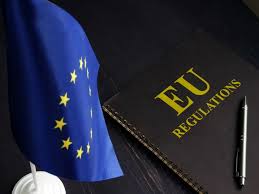National representatives from the EU Member States within the REACH committee have officially sanctioned a partial prohibition of PFHxA, a commonly utilised PFAS. This decision comes amidst criticisms directed at the European Commission’s choice to opt for a narrower ban, excluding industrial applications, as campaigners advocated for a broader prohibition.
Member states have ratified a prohibition on undecafluorohexanoic acid (PFHxA), a variant of per‑ and polyfluoroalkyl substances (PFAS), during a session held on 29 February 2024 within a comitology committee established under the Regulation concerning the Registration, Evaluation, Authorisation, and Restriction of Chemicals (REACH).
PFHxA are said to be used in large quantities in sectors such as clothing, textiles and paper/cardboard food packaging, as water, oil and stain repellents. They are said to be extremely persistent chemicals that can accumulate in the human body and the environment, according to the restriction report which was prepared by the German Federal Institute for Occupational Safety and Health (the BAuA). Indeed, according to the BAuA, PFHxA, its salts and related substances have a combination of hazardous properties. it is also mobile in the aquatic environment, can be distributed easily within and between environmental compartments by aqueous media, has a long‑range transport potential, and has the potential to enrich in plants, which are an important source for nutrition. Additionally, due to its mobility, PFHxA is found in drinking water. Both nutrition and drinking water are important routes of exposure for humans via the environment. In addition, the substance shows adverse effects in developmental toxicity studies.
About 55,000 t/a of PFHxA precursors (such as 6:2 acrylates) are, according to the BAuA, used in textile treatment; in consequence, about 75% of the used precursors may be found in imported textiles. Several textile subsectors contribute to the emission of PFHxA, its salts and related substances into the environment, with one of the largest sectors being the manufacture of clothing. Only one‑third of garments is manufactured in the EU. The bulk of garments is – according to the BAuA– imported from the Asia‑Pacific region, e.g. from the Chinese mainland, Vietnam and Indonesia. Around two‑thirds of PFHxA released into the European environment originate from these textiles. Finishing agents are applied in functional clothing such in outdoor textiles, which provide weather protection and body moisture management to the wearer. PFHxA related substances are detected in floor waxes, stone or wood sealants and wood insulation materials as well.
The future restriction will be inserted into Annex XVII of the REACH Regulation. Economic operators and Member States will be allowed sufficient time to take appropriate measures to comply with the restriction. Therefore, the application of the restriction will be deferred for:
- 18 months following its entry into force for firefighting foams used in training, testing and public fire services;
- 24 months for textiles, leather, furs and hides in clothing and related accessories and footwear for the general public, paper and cardboard used as food contact materials, mixtures for the general public and cosmetic products;
- 36 months for textiles, leather, furs and hides other than in clothing and related accessories for the general public;
- 5 years for firefighting foams used in civil aviation.
The restriction will not apply to products for which the supplier can demonstrate that they were placed on the market prior to the respective dates of application of the restriction. It will also not apply to certain types of personal protective equipment (PPE), medical devices, in vitro diagnostic devices, and textiles used as construction textiles.
Recent studies have shown that PFAS‑free food packaging and clothing are already available in the EU. Several outdoor clothing brands, like North Face, Black Diamond and VAUDE are said to have invested in PFAS‑free alternatives.
The chief EU policy advocate at the CHEM Trust campaign group asserted the urgency to cease the utilisation of all PFAS, also referred to as “forever chemicals”, in consumer products and to counteract the substantial emissions into the environment originating from the chemicals industry. He underscored the necessity of such actions to prevent the accumulation of PFAS pollution in water, food and the human body.
Despite initial proposals by Germany for broader restrictions, the Commission recommended a more restricted approach, excluding industrial uses of PFHxA. Environmental campaigners, including CHEM Trust and the Health and Environment Alliance, expressed reservations regarding the narrower scope of PFHxA limitations in a letter dispatched before the vote to members of the REACH committee.
The letter argued that the distribution and application of PFHxA in both industrial and consumer contexts contribute to unregulated releases into the air, water, and soil. It emphasised the significant impact that narrowing down the scope may have on reducing the risks associated with PFHxA, given its high persistence.
Once the restriction is implemented, industry must comply throughout the Union territory. That includes all manufacturers, importers, distributors, downstream users and retailers. Member States are responsible for enforcing the restriction.



